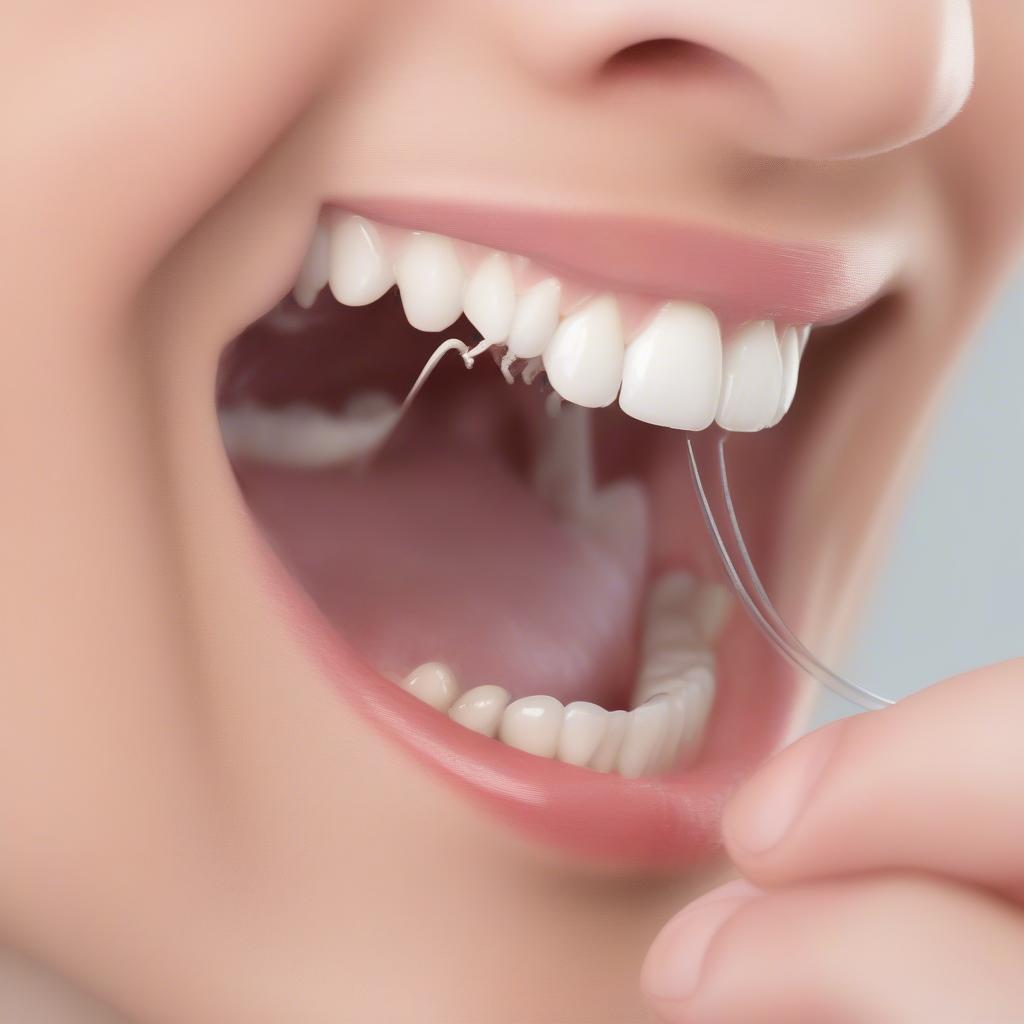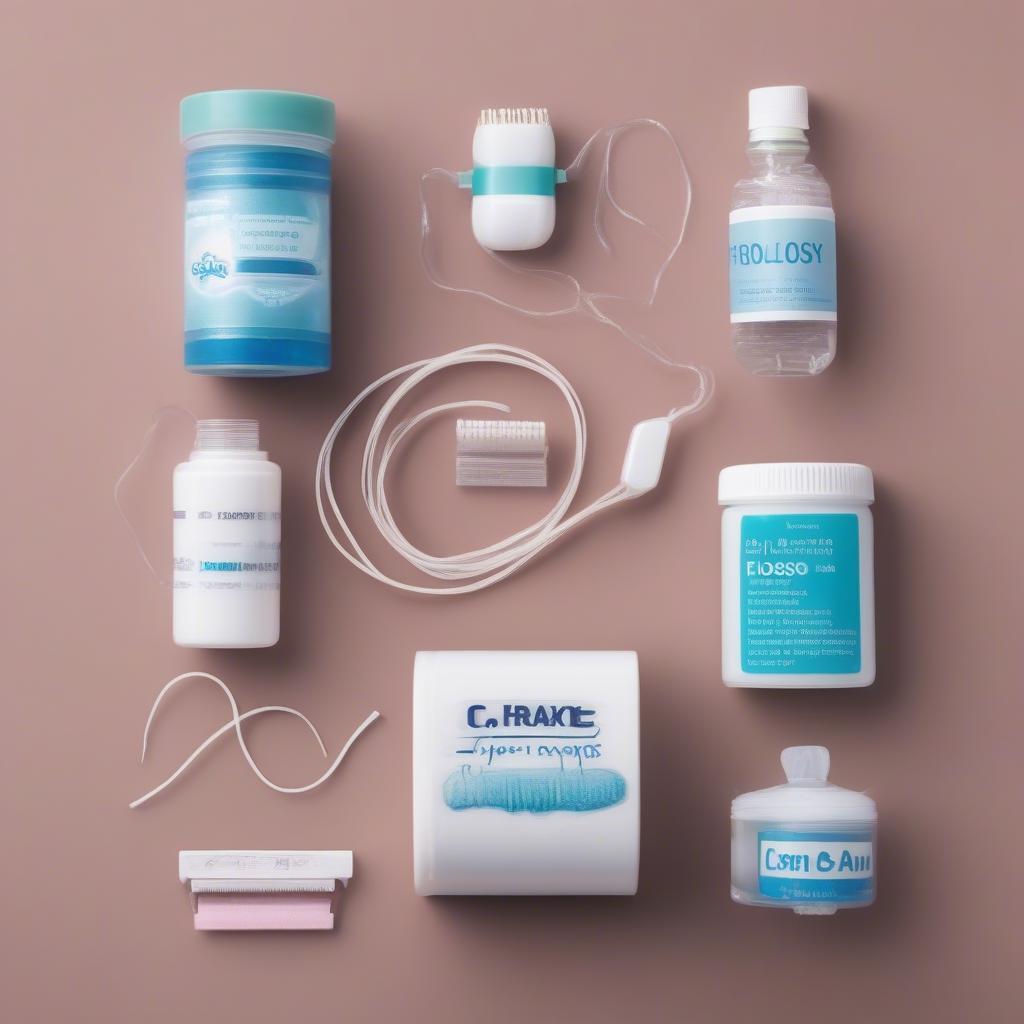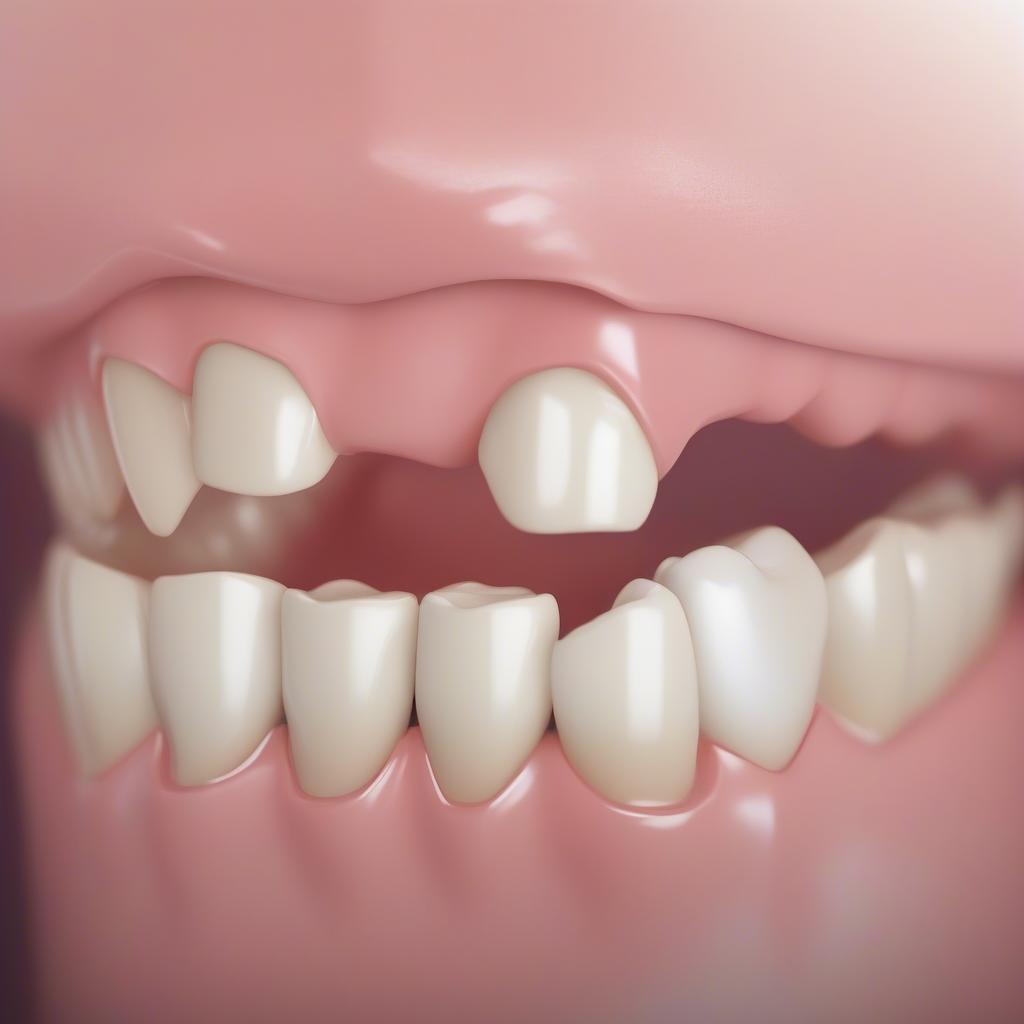
Floss for Crowns: Maintaining Oral Hygiene for Dental Restorations
- AmazoniaSilva
- Tháng 12 10, 2024
- Zodiac signs
- 0 Comments
Floss For Crowns is crucial for maintaining the longevity and health of your dental restorations. Proper flossing techniques remove plaque and food particles from around the crown, preventing decay and gum disease. This article will explore the importance of flossing for crowns and provide practical tips for effective cleaning.
Why is Flossing Crucial for Crowns?
Crowns, while durable, are not immune to the buildup of plaque and bacteria. The margin where the crown meets the natural tooth is particularly vulnerable. Without proper flossing, bacteria can accumulate, leading to cavities, gum inflammation (gingivitis), and even periodontal disease, which can jeopardize the stability of the crown. Regular flossing helps disrupt biofilm formation and removes debris that brushing alone often misses, promoting healthy gums and supporting the long-term success of your dental restoration.
 Flossing Around a Dental Crown
Flossing Around a Dental Crown
Choosing the Right Floss for Crowns
Not all floss is created equal. While traditional waxed floss can be used, it might be challenging to maneuver around crowns, especially in tight spaces. Consider opting for the following floss types:
- Super floss: This floss has a stiffened end, a spongy section, and regular floss, making it ideal for cleaning under bridges and around crowns. The stiffened end allows for easy threading, while the spongy section cleans larger surface areas.
- Dental tape: Wider and flatter than traditional floss, dental tape is gentle on the gums and effective at cleaning wider spaces.
- Water flossers: These devices use a stream of pulsating water to remove plaque and food particles. While convenient, they shouldn’t replace traditional flossing but can be a helpful supplement.
 Different Types of Dental Floss
Different Types of Dental Floss
How to Floss with Crowns: A Step-by-Step Guide
- Gather your supplies: Choose your preferred floss type (super floss is recommended).
- Thread the floss: For super floss, use the stiffened end to thread the floss under the crown or bridge. For regular floss, gently guide it between the teeth adjacent to the crown.
- Wrap the floss: Form a “C” shape around the tooth with the crown, ensuring the floss is snug against the tooth surface.
- Gently move the floss: Slide the floss up and down against the side of the tooth, reaching below the gumline. Avoid snapping or forcing the floss, as this can damage the gums.
- Repeat: Move to the next tooth and repeat the process. Ensure you floss all sides of the crowned tooth.
Addressing Common Concerns about Flossing with Crowns
What if my floss catches or shreds? This could indicate an overhanging margin on the crown or decay. Consult your dentist for evaluation.
My gums bleed when I floss. Is this normal? Some bleeding is normal, especially if you haven’t been flossing regularly. However, persistent or excessive bleeding should be addressed by your dentist.
 Healthy Gums Around a Dental Crown
Healthy Gums Around a Dental Crown
Maintaining Excellent Oral Hygiene with Crowns: Beyond Flossing
While flossing is essential, it’s part of a comprehensive oral hygiene routine. Brushing twice daily with fluoride toothpaste, rinsing with an antiseptic mouthwash, and regular dental checkups are crucial for maintaining the health of your crown and overall oral health.
Dr. Emily Carter, DDS, a leading expert in restorative dentistry, emphasizes the importance of flossing: “Crowns are an investment in your smile. Proper flossing is paramount to protect that investment and ensure its longevity.” Another expert, Dr. Michael Davis, DMD, adds, “Patients often underestimate the importance of flossing around crowns. It’s the single most effective way to prevent complications and maintain healthy gums.”
Conclusion
Floss for crowns is an essential practice for maintaining healthy gums and ensuring the long-term success of your dental restoration. By incorporating the right flossing techniques and choosing the appropriate floss type, you can effectively remove plaque and debris, preventing potential complications. Remember, consistent flossing, combined with regular brushing and dental checkups, is vital for a healthy and beautiful smile.
FAQ
- How often should I floss with a crown?
- Can I use a water flosser instead of traditional floss?
- What should I do if my floss gets stuck under my crown?
- Is it normal for my gums to bleed when I floss around my crown?
- What type of floss is best for crowns?
- Can flossing damage my crown?
- How can I tell if my crown needs to be replaced?
If you need assistance, please contact us at Email: [email protected], address: Fifth Avenue, 34th Floor, New York, NY 10118, USA. We have a 24/7 customer service team.


